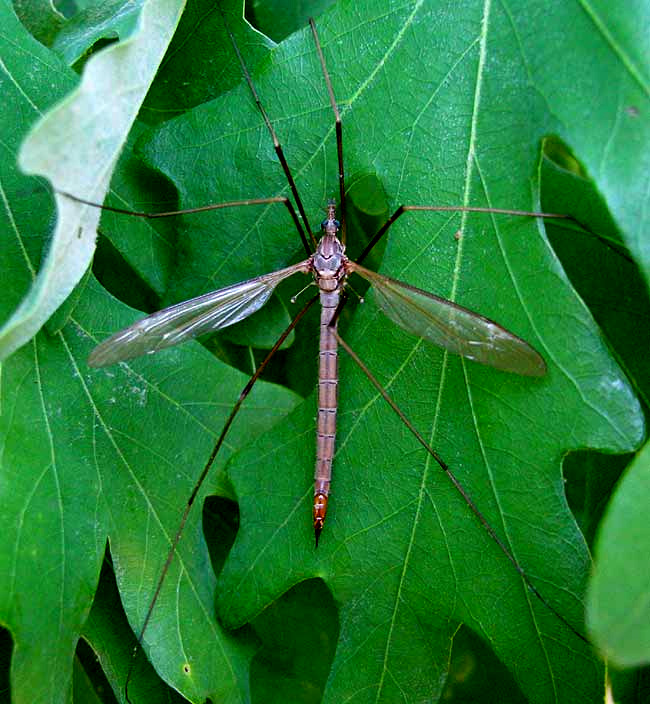Excerpts from Jim Conrad's
Naturalist Newsletter

from the April 29, 2012 Newsletter issued from the woods of the Loess Hill Region a few miles east of Natchez, Mississippi, USA
RESTING CRANE FLY
Resting on a White Oak leaf in deep shadow below other leaves, a crane fly sat still long enough to grant the image above. That looks like a mosquito but you can see from how much of the leaf he covers that he's far too large to be any mosquito species found here. Also, he lacks the hypodermic-like proboscis mosquitoes use to suck blood. No conspicuous mouthparts are visible on our crane fly because adult crane flies generally hardly eat at all, only occasionally lapping up a bit of pollen or sugar-rich flower nectar. Their maggot-like larvae feed on plant roots. Some species can damage crops.
Oosterbroek's monumental, 2012 Catalogue of the Craneflies of the World -- free and online at Researchgate.Net website --recognizes 15,345 cranefly species, 1630 of them just in our Nearctic ecozone, which embraces the US, Canada, Greenland, and most of northern Mexico.
That's why when I shipped the picture to volunteer identifier Bea in Ontario it took more time than usual for her verdict to come in, and she was comfortable only with calling it the genus TIPULA.
Whatever our species, it's a pleasure to take the close shown below:

What are those things below the wings looking like needles with droplets of water at their ends? Those are "halteres," which commonly occur among the Fly Order of Insects, the Diptera. Though their purpose isn't known with certainty, it's assumed that they help control flight, enabling flies to make sudden mid-air changes in direction. From the evolutionary perspective, halteres are modified back wings. Most insects have two pairs, or four, wings, but not the Diptera, as the name implies -- di-ptera, as they say "two-wings" in classical Greek.